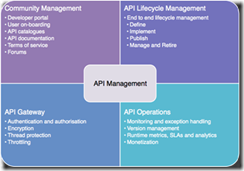Converting ADLs to implement end to end JSON in SOA Suite 12.2.1 -PART I by Luis Augusto Weir
February 12, 2017 Leave a comment
There is no doubt that web [Rest] APIs have become extremely popular and its usage has gone well beyond just building APIs in support of mobile apps. We can see the adoption of resource-oriented architectures (ROA) by probably all SaaS vendors who provide out-of-the-box APIs as the means to connect and interact with their cloud applications. Take for example the Oracle Cloud. To discover and consume publicly available Oracle SaaS APIs, all one need to do is browse the Oracle API Catalog Cloud Service (which is publicly accessible) and just select the Swagger definition for any given API.
But (as you probably already know) the adoption of web APIs hasn’t stopped there. With the increased popularity of Microservice Architectures , initiatives such as Open Legacy , and node.js based frameworks like loopback and sails (to name a few), API-enabling system of records is becoming a lot easier.
This is putting a lot of pressure in software vendors to quickly modernise their integration suites to natively support the technology-stacks and patterns prevalent in these type of architectures. For example, if an organisations mobile application needs to interact with a system of record (on premise or the cloud) that already exposes a web API, the integration stack should be capable of supporting JSON over HTTP end-to-end without having to convert to XML back and forth. Not only is this impractical but introduces more processing burden to the core stack…
Luckily for many Oracle’s customers and Oracle Fusion Middleware / Oracle PaaS practitioners like myself, with the latest release of Oracle SOA Suite (12.2.1) , one of the many new features introduced is the support for handing JSON end-to-end. I don’t want to understate the importance of this as with such feature it is possible to use BPEL for example to orchestrate several APIs (all in native JSON and also in-memory with the new SOA in-memory feature) and therefore deliver coarse grained business APIs that actually perform.
For me this represents an important milestone for Oracle SOA Suite as it shows the departure from traditional SOA tech-stack and into SOA 2.0 (as I like to call it) as the suite is now better suited to support the adoption of ROA, microservices, IoT, and so on. Having worked with SOA Suite since 10.1.3.1 this is very exiting. Read the complete article here.
For regular information on Oracle SOA Suite become a member in the SOA & BPM Partner Community for registration please visit www.oracle.com/goto/emea/soa (OPN account required) If you need support with your account please contact the Oracle Partner Business Center.
![]() Blog
Blog ![]() Twitter
Twitter ![]() LinkedIn
LinkedIn ![]() Facebook
Facebook ![]() Wiki
Wiki










